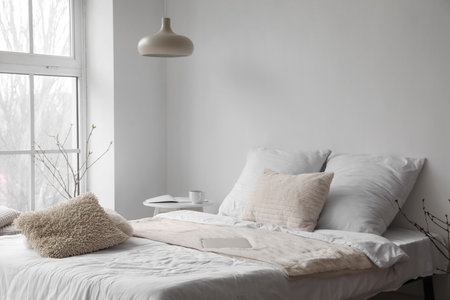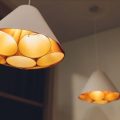Understanding Minimalism in American Design
Minimalism has become a defining trend in American interior design, especially among homeowners who value simplicity and tranquility. At its core, minimalism emphasizes the idea that less is more. This philosophy centers on decluttering spaces and prioritizing essential pieces that serve both functional and aesthetic purposes. The minimalist approach in American bedrooms often features clean lines, neutral color palettes, and thoughtfully chosen furnishings that create a sense of openness and calm. Many Americans are drawn to minimalism because it helps reduce visual chaos and fosters a peaceful environment—a welcome retreat from the fast-paced nature of everyday life. By eliminating unnecessary items and focusing on quality over quantity, minimalism supports mental clarity and relaxation, making it a popular choice for those seeking harmonious living spaces.
2. Feng Shui Fundamentals for Bedroom Harmony
Feng Shui, an ancient Chinese practice, is all about optimizing the flow of energy—known as “chi”—to create spaces that nurture well-being, balance, and tranquility. When it comes to bedrooms, the principles of Feng Shui are especially relevant because the bedroom is considered a sanctuary for rest and rejuvenation. Understanding these core concepts can help you design a bedroom that not only looks minimal and clutter-free but also feels calm and restorative.
Key Feng Shui Concepts for Bedrooms
| Concept | Description | Relevance to Minimalist Design |
|---|---|---|
| Command Position | The bed should be placed where you can see the door without being directly in line with it, promoting a sense of safety and control. | Minimal furniture makes it easier to achieve this ideal placement. |
| Clutter-Free Space | Physical clutter disrupts energy flow and can contribute to stress or poor sleep quality. | Minimalism’s focus on simplicity aligns perfectly with this principle. |
| Balanced Elements | Incorporate wood, fire, earth, metal, and water for energetic balance. | Selecting simple, natural materials supports both aesthetics and harmony. |
| Natural Light and Airflow | Good ventilation and soft lighting help circulate positive chi. | A minimalist approach often favors open layouts that let light and air move freely. |
Applying Feng Shui Principles in Practice
The primary aim is to foster a restful environment by thoughtfully arranging furniture and choosing calming colors. For example, neutral tones such as soft grays, gentle whites, and muted earth shades enhance peace while supporting minimalism. Avoid placing your bed under windows or directly opposite doors to minimize disruptions during sleep. Keep electronics out of sight or out of the room when possible; they represent active energy that can interfere with relaxation. By integrating these Feng Shui fundamentals into your minimalist bedroom design, you’ll create a space that feels both modern and deeply harmonious—an oasis for body and mind.

3. Blending Minimalism and Feng Shui
Integrating minimalist aesthetics with Feng Shui practices in the bedroom is not only possible but often surprisingly harmonious. Both philosophies emphasize simplicity, clarity, and the importance of space—making them natural partners for creating a peaceful retreat. To blend these styles effectively, start by prioritizing quality over quantity. Choose a few well-made pieces of furniture that serve both functional and aesthetic purposes. Opt for clean lines and neutral tones, which resonate with minimalism and support Feng Shui’s goal of promoting calm energy.
One key area where minimalism and Feng Shui align is the focus on decluttering. According to Feng Shui, clutter disrupts the flow of positive energy (chi), while minimalism seeks to eliminate excess for mental clarity. Keep surfaces clear and only display items that have personal meaning or contribute to serenity, such as a favorite piece of art or a small plant. Storage solutions should be discreet, helping maintain visual order and ease of movement throughout the room.
Another strategy is mindful placement. In both traditions, how you arrange your furniture matters. The bed should be positioned to face the door without being directly in line with it—a classic Feng Shui principle that also supports a minimalist sense of balance. Limit electronic devices and avoid placing mirrors where they reflect the bed, as these can disrupt restful energy according to Feng Shui teachings.
Lighting plays a crucial role as well. Opt for soft, layered lighting instead of harsh overhead fixtures to create a tranquil atmosphere that honors both minimalist design and Feng Shui harmony. Natural light is best; keep window treatments simple to maximize daylight while maintaining privacy.
By thoughtfully merging these approaches, you can design a bedroom that feels open, inviting, and restorative—a true sanctuary rooted in both modern style and timeless wisdom.
4. Choosing Furniture and Décor Wisely
When it comes to creating a harmonious bedroom that blends minimalism with Feng Shui, your choice of furniture and décor is crucial. Both philosophies prioritize function, flow, and simplicity, so every piece should serve a clear purpose while supporting the energy of the space. Begin by selecting only the essentials—think bed, nightstands, and a dresser—and opt for items with clean lines and neutral tones to promote calmness and clarity. Avoid bulky or ornate pieces that can disrupt the room’s natural flow.
Key Principles for Furniture Selection
| Minimalism | Feng Shui |
|---|---|
| Choose multi-functional pieces to reduce clutter | Select furniture with rounded edges for smoother energy flow |
| Favor neutral colors like white, beige, or soft gray | Use materials like wood or bamboo to ground the space |
| Limit the number of decorative items | Avoid mirrors facing the bed to maintain restful energy |
Smart Décor Choices
Décor in a minimalist Feng Shui bedroom should be intentional. Incorporate soft textiles such as cotton bedding or linen curtains to add comfort without overwhelming the senses. Artwork should evoke tranquility—landscape paintings or abstract prints in muted colors work well. Plants can bring life and positive chi (energy), but choose low-maintenance options like snake plants or peace lilies and avoid overcrowding surfaces.
Tips for Arranging Furniture and Décor
- Position your bed against a solid wall for stability and support, ideally diagonally across from the door but not directly in line with it.
- Keep pathways clear to allow for easy movement and uninterrupted energy flow.
- If you need extra storage, use under-bed containers or built-in closets rather than adding more furniture.
Final Thought
The key is to let each item contribute positively to both functionality and atmosphere. By thoughtfully choosing furniture and décor that honor minimalism and follow basic Feng Shui principles, you create a peaceful bedroom retreat that supports restful sleep and overall well-being.
5. Optimizing Layout for Energy Flow
Strategic Bed Placement
According to both minimalism and Feng Shui principles, the bed is the focal point of your bedroom. Place your bed so that you have a clear view of the door without being directly in line with it—this is called the “command position” in Feng Shui. Avoid placing the bed under windows or against walls shared with bathrooms, as these positions can disrupt energy flow and sleep quality. A minimalist approach supports keeping only essential furniture around the bed, ensuring open space on either side to promote balance and accessibility.
Clutter-Free Storage Solutions
To maintain a serene and harmonious atmosphere, invest in streamlined storage solutions that keep clutter out of sight. Opt for low-profile dressers, under-bed storage bins, or built-in closets to maximize floor space. Minimalist storage should prioritize functionality while maintaining a clean visual aesthetic—choose pieces that blend seamlessly into your room’s design. In Feng Shui, closed storage helps contain energy, preventing it from becoming stagnant or overwhelming.
Organized Room Arrangement
The overall organization of your bedroom plays a crucial role in sustaining positive energy. Arrange furniture so that pathways are clear and natural light is not obstructed. Limit decorative objects to a select few meaningful items, creating an environment free from distractions. Use symmetry when possible—matching nightstands or lamps on either side of the bed enhance balance and promote calmness. Regularly edit and remove unnecessary items to reinforce both minimalist values and optimal energy flow according to Feng Shui.
Additional Tips for Serene Energy
- Keep technology to a minimum; avoid TVs or computers in the bedroom.
- Use soft, neutral colors for walls and bedding to support relaxation.
- Incorporate plants sparingly for fresh air and vibrant, living energy.
By optimizing your layout with these principles, you’ll create a peaceful sanctuary where positive energy thrives and restful sleep comes naturally.
6. Personalizing with Purpose
One of the most rewarding aspects of minimalist Feng Shui is the ability to create a bedroom that feels uniquely yours while still adhering to the principles of harmony and simplicity. In American homes, personalization often means displaying cherished photos, heirlooms, or travel mementos. To maintain a minimalist and Feng Shui-friendly environment, select only a few meaningful items that truly resonate with your sense of identity and well-being.
Choose Meaningful Decor
Opt for decor that holds sentimental value or positive energy. For example, a framed photo from a happy memory or a piece of art that inspires tranquility can serve as focal points without cluttering the space. Remember to keep surfaces clear and avoid overcrowding walls or nightstands. This approach ensures each item stands out and contributes to the room’s calm atmosphere.
Honor Cultural Traditions Thoughtfully
If you wish to incorporate cultural elements—such as family symbols, traditional crafts, or spiritual objects—select pieces that are simple in design and align with Feng Shui principles. Place them intentionally, such as on a dedicated shelf or in a specific corner, to enhance positive energy (Qi) without disrupting the flow of the room.
Balance Individuality with Harmony
Personal touches should add to the harmony rather than detract from it. Consider how colors, shapes, and placement affect the overall energy. Stick to a unified color palette and choose natural materials when possible, reflecting both American minimalism and Feng Shuis focus on nature. By curating your bedroom thoughtfully, you create a restful retreat that honors your story while supporting peace and balance.

